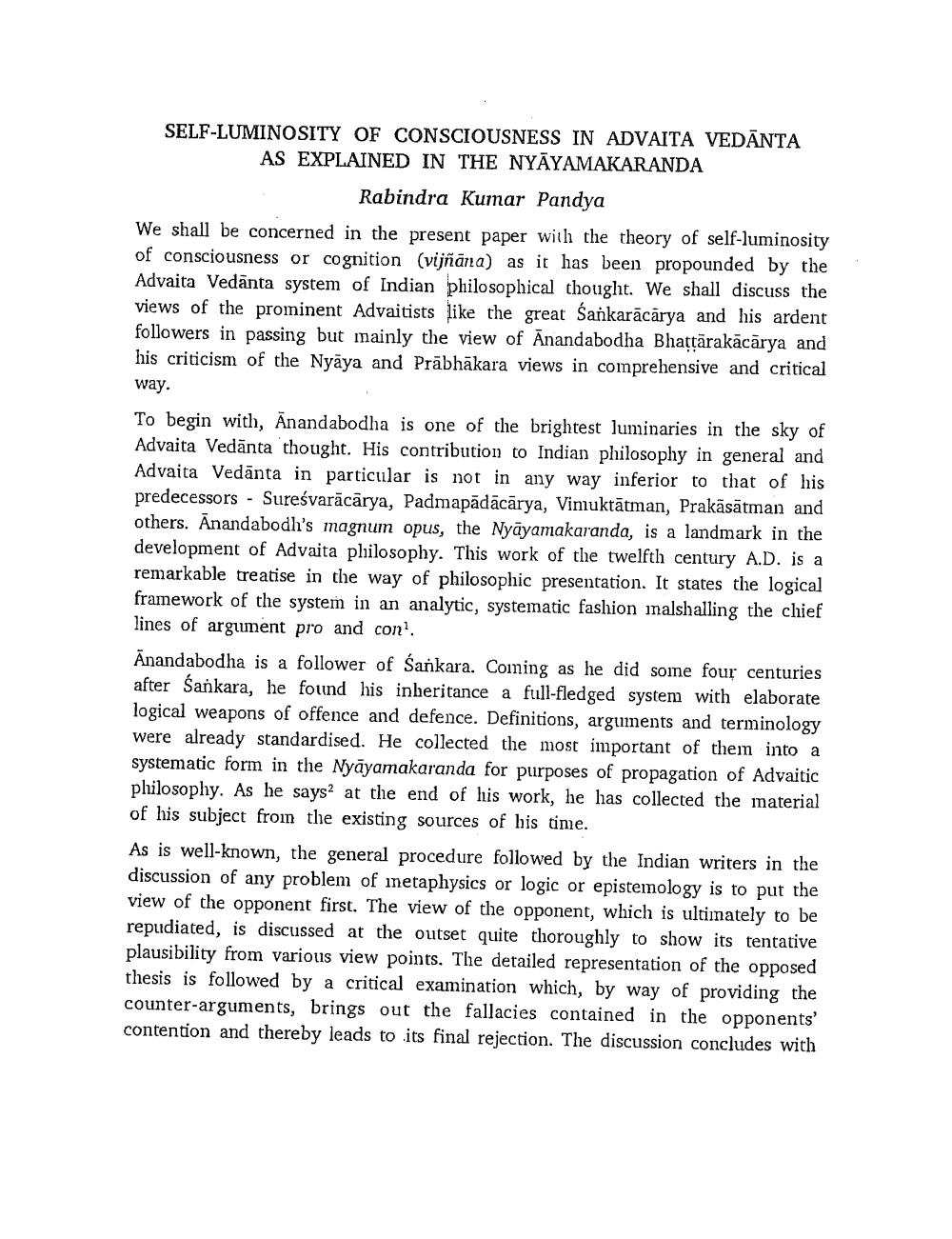________________
SELF-LUMINOSITY OF CONSCIOUSNESS IN ADVAITA VEDÄNTA AS EXPLAINED IN THE NYAYAMAKARANDA
Rabindra Kumar Pandya
We shall be concerned in the present paper with the theory of self-luminosity of consciousness or cognition (vijñāna) as it has been propounded by the Advaita Vedanta system of Indian philosophical thought. We shall discuss the views of the prominent Advaitists like the great Sankaracarya and his ardent followers in passing but mainly the view of Anandabodha Bhattarakacārya and his criticism of the Nyaya and Prabhakara views in comprehensive and critical
way.
To begin with, Anandabodha is one of the brightest luminaries in the sky of Advaita Vedanta thought. His contribution to Indian philosophy in general and Advaita Vedanta in particular is not in any way inferior to that of his predecessors Sureśvarācārya, Padmapādācārya, Vimuktätman, Prakāsātman and others. Anandabodh's magnum opus, the Nyayamakaranda, is a landmark in the development of Advaita philosophy. This work of the twelfth century A.D. is a remarkable treatise in the way of philosophic presentation. It states the logical framework of the system in an analytic, systematic fashion malshalling the chief lines of argument pro and con'.
Anandabodha is a follower of Sankara. Coming as he did some four centuries after Sankara, he found his inheritance a full-fledged system with elaborate logical weapons of offence and defence. Definitions, arguments and terminology were already standardised. He collected the most important of them into a systematic form in the Nyayamakaranda for purposes of propagation of Advaitic philosophy. As he says? at the end of his work, he has collected the material of his subject from the existing sources of his time.
As is well-known, the general procedure followed by the Indian writers in the discussion of any problem of metaphysics or logic or epistemology is to put the view of the opponent first. The view of the opponent, which is ultimately to be repudiated, is discussed at the outset quite thoroughly to show its tentative plausibility from various view points. The detailed representation of the opposed thesis is followed by a critical examination which, by way of providing the counter-arguments, brings out the fallacies contained in the opponents' contention and thereby leads to its final rejection. The discussion concludes with




